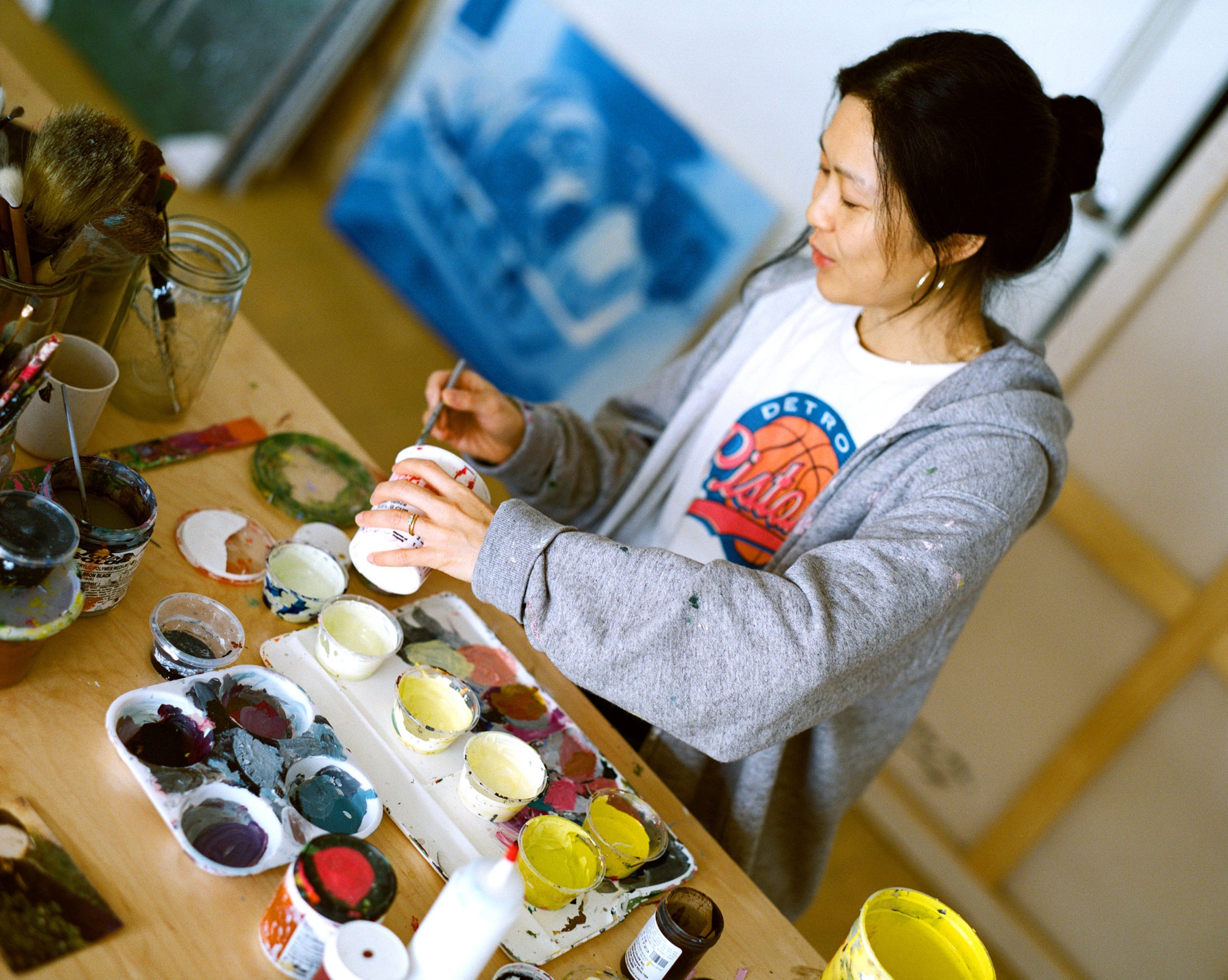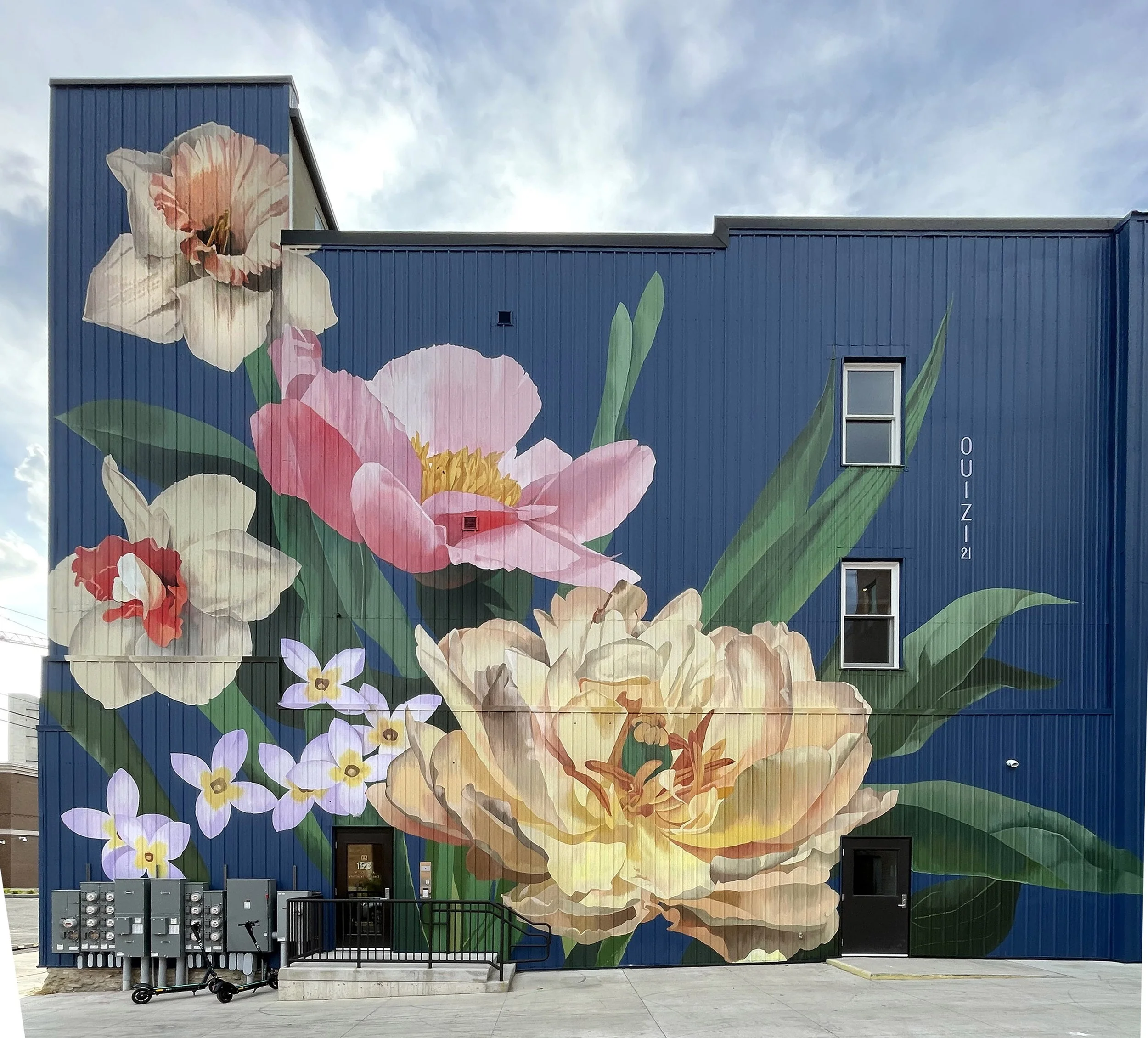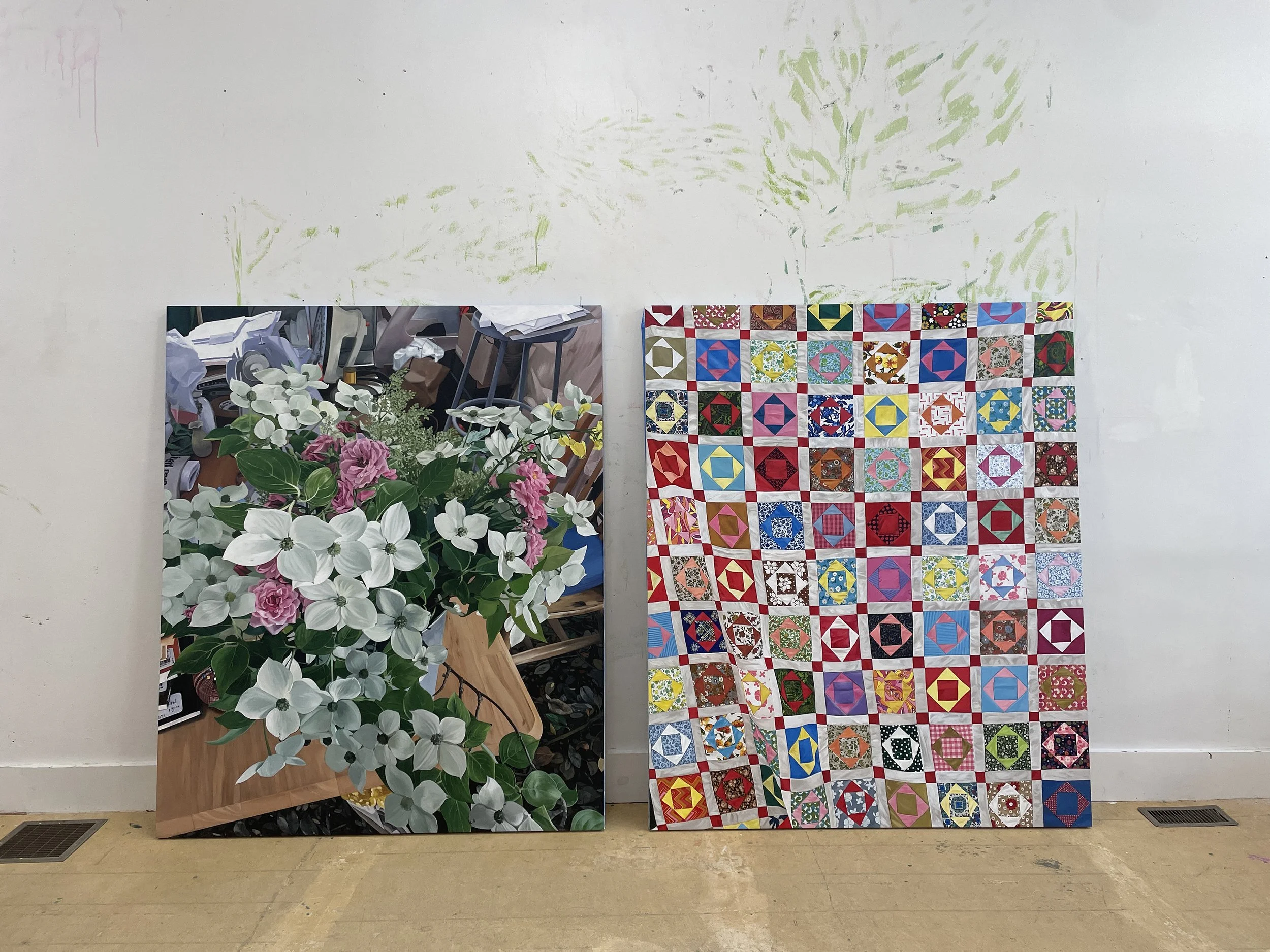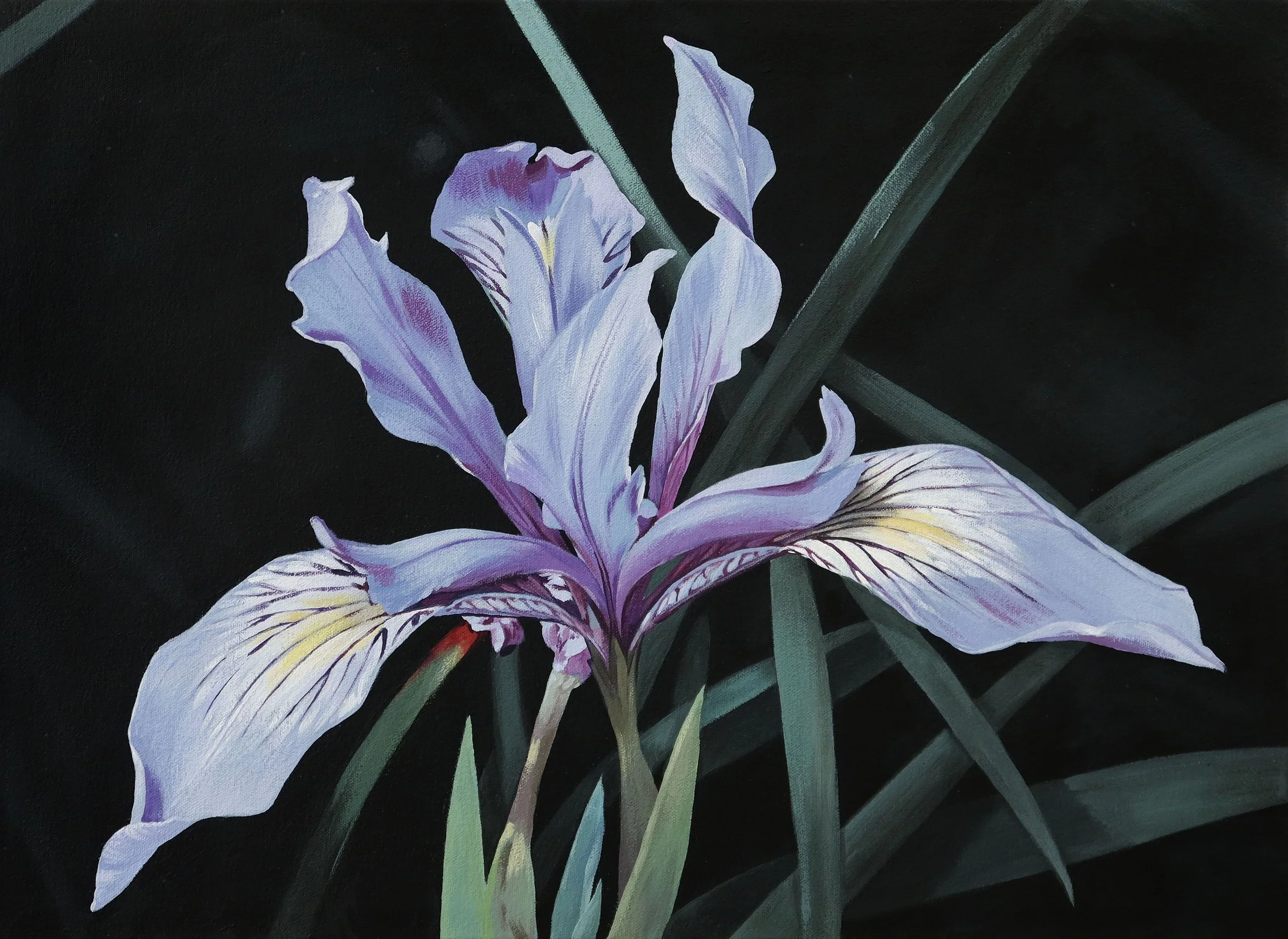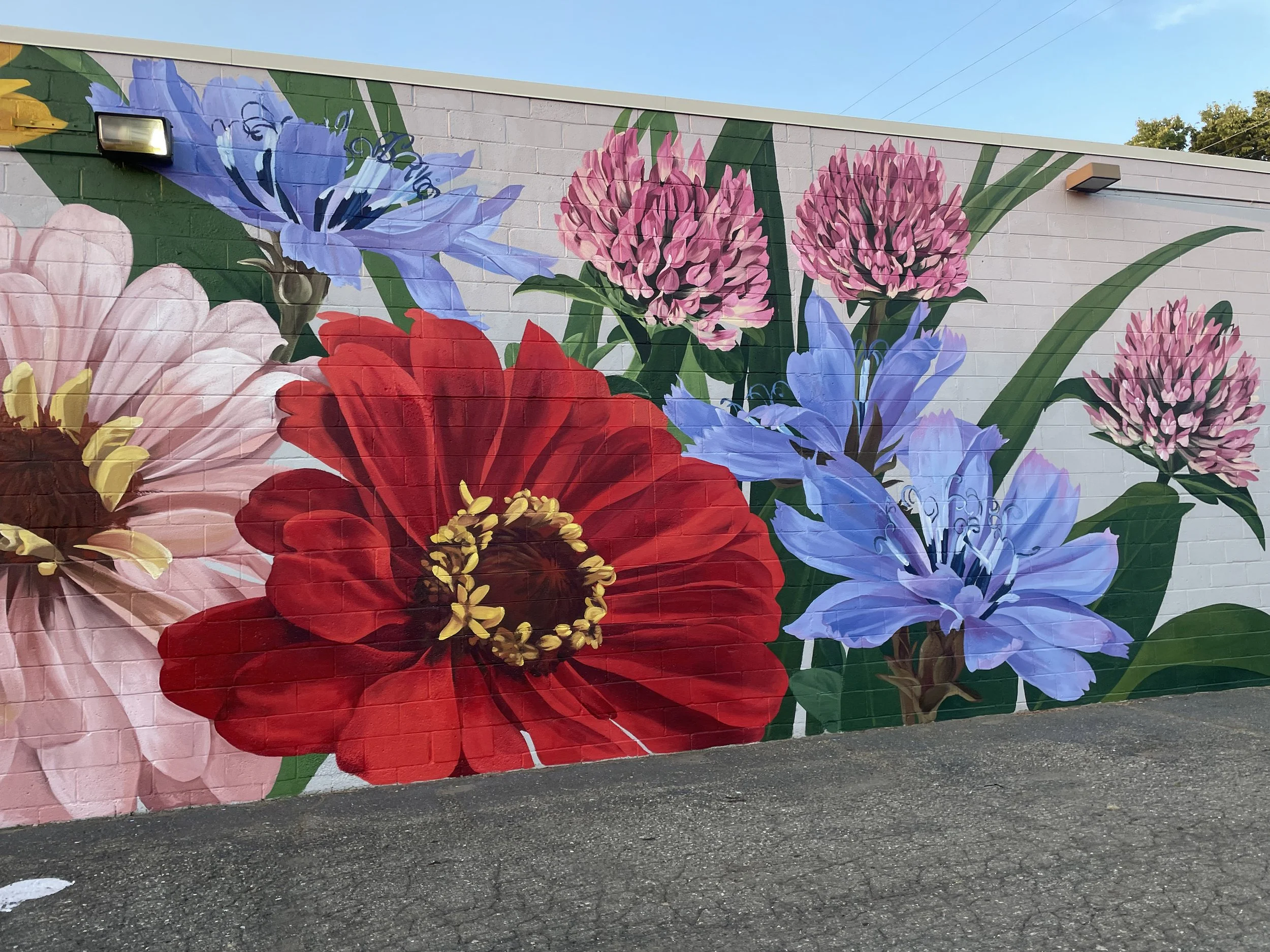Painting the City in Full Flower
A Talk with Ouizi
Today, we're with artist Louise Jones, better known as Ouizi. Originally from Los Angeles and now based in Detroit, she creates stunning large-scale floral murals and vibrant paintings. As beautifully captured in the photographs by Anastasia Cheatham, her work is a celebration of nature. In this interview, we'll dive into her journey into mural art, her love for flowers, and how her studio work influences her public pieces.
Hello Louise, how are you? Can you tell us a bit about yourself, who you are, where you’re based, and what do you do?
Hello, I’m doing well. My name is Louise Jones. I was born and raised in Los Angeles, but I live in Detroit now and have a painting studio where I spend most days. A big chunk of the year, mainly Summer and Fall, I travel to do murals or exhibitions.
Your large-scale murals often feature beautiful floral imagery. What draws you to flowers and nature as central themes in your work?
Originally, the flower motif came from floral patterns. I loved the color combinations, and the illustration styles from the 60’s and 70’s really appealed to me. I sought to replicate what I saw, translating the thickly printed wallpapers and fabrics into gouache illustrations where the patterns were not repetitious, but varied and organic. It evolved into a general love of flowers in their natural state, and my knowledge and appreciation of them was further encouraged by my move to a place much different from where I grew up. Unlike California, Michigan has four distinct seasons, all of which I like to draw inspiration from.
Having transitioned from drawing and printmaking to large-scale murals and canvas paintings, how has your background in those mediums influenced your current artistic practice?
I love drawing because it is the most accessible art form. Typically the first one almost everyone picks up. You can use any materials that you have on hand, from colored pencils, to ballpoint pens, gouache, or watercolor. I’ve always valued resourcefulness, so I consider drawing and its inherent accessibility a valuable form of expression. I love creating art with very little materials. In printmaking, a relief print is any surface that you can carve into. My first relief print was carved out of a piece of 2 x 4 with a craft knife. The technique is similarly approachable to drawing, you can create an image with one ink color, or break it down into layers based off of the colors, then tie it all together with a final layer of line work. Having never studied painting during my school years, I took what I knew from printmaking and drawing and applied it to my first murals. I actually learned how to paint from doing murals. It was never part of any sort of orchestrated long-term plan.
Once I had steadily built this career doing murals, I felt free to devote more time to a studio practice. I started making paintings with flowers in them, but less and less so. I tried to combine my floral work with this other aspect of my creativity, which stems from my sense of humor and sarcasm - the messy, embarrassing, real parts of life. It was a huge shift that I was afraid to make, but that I thought was necessary for me to grow as a person and an artist. I didn’t know if there was room for both, and often times I tried to incorporate both, but I think it’s okay to have them live in separate canvases, and still be part of one body of work. There are different facets to each of us, and it’s not all rainbows and fields of flowers, sometimes there is a petrol station or a piece of garbage in our view, and instead of ignoring it, I’m suggesting that we look at it closer.
Your move to Detroit in 2014 seems to have been a pivotal moment, marking your entry into mural painting. Could you tell us about that transition and what inspired you to start painting flowers on buildings?
I moved to Detroit in 2014 after having traveled to the city a few times before, each time feeling more familiar with the city, until I finally found the home I live in now (an abandoned house that I fixed up). The first time I visited Detroit, I had already starting painting larger scale works in 2010 and 2011, taking inspiration from street artists and installation artists who were exploring the boundaries of art making. I met a lot of friendly people who let me paint murals for them, so word would spread that I was looking for more walls to paint, and eventually the projects got bigger and bigger.
Your murals have been displayed in diverse settings, from museums to public spaces. How does the context of a piece – whether it's a gallery wall or the side of a building – affect your approach to the work?
I try to consider the audience, and generally the purpose my art will serve there. If it’s a gallery or museum, the mural tends to be more site-specific; either taking notes from the other works being shown, or from gardens on the premises. When I paint murals for municipalities, I will paint native plants; wildflowers, and popular cultivars. I also try to incorporate suggestions from community members and stakeholders.
You currently balance public mural commissions with private works on canvas that explore still life and landscape. How do these two aspects of your art inform and influence one another?
Painting murals in different environments allows me to travel and experience places, but it also involves a lot of logistics and social interaction. When I make paintings in my studio, the process is very simple, and I am completely alone with my thoughts. Making my work in the public eye takes a lot out of me, but when I am in my studio, it feels like a respite, physically and mentally. Flowers are the embodiment of universal beauty and they have wide public appeal. I also find them to be extremely personal, and I’ve learned that everyone has their own relationships to them. My still life’s and landscapes tell stories about the human condition, where occasionally flowers and our relationships to them will be part of the narrative. In general though, the paintings aren’t meant to contain obvious appeal, and sometimes they are deliberately ugly. These two main themes work in harmony - beauty and ugliness, one would not exist without the other, and they balance each other out.
Could you describe your approach to color selection and how you use it to convey the vibrancy and energy of nature in your paintings?
It all comes down to the flowers I choose. Flowers are natures color palette. That said, I tend to gravitate towards more warm, soft, and pastel palettes, and I also look for flowers with pops of saturated color. Once I’ve settled on the flowers, I just try to stay true to the photo references. I also tend to use a lot of leaves in my compositions, because green is one of my favorite colors, it’s very calming.
What is your intention when you paint flowers and landscapes? Are you aiming for botanical accuracy, or is there a particular feeling, essence, or story about the natural world that you want to capture?
When I first started painting vintage flower patterns, I was inspired by their form and color. For a while I tried incorporating flowers into everything I made, and eventually I decided to paint them alone, on a huge scale, because it seemed like something that hadn’t been done before. Aside from Georgia O’Keeffe, there weren’t a lot of artists painting flowers in a serious way. I especially hadn’t seen anyone doing them on such a large scale as a mural on a building. The first few murals I did were abstract depictions of flowers, and in those I was really going for a feeling. Now, I paint botanically accurate flowers, and I am both attempting to capture that feeling while also honoring the beauty of nature.
Do you have a particular flower that you find especially inspiring, and if so, what draws you to it?
This changes all the time. Currently, I’m really inspired by flowering trees. I love dogwood, cherry blossoms, apple blossoms, and magnolias. I just love that these trees erupt with blossoms in the Spring. It’s beautiful to see.
What do you hope people feel or think when they see your paintings of flowers and nature?
I hope that my work improves peoples moods, or at least makes them feel a sense of wonder. I love it when bus drivers and pedestrians show their appreciation, we get a lot of happy honking and smiles.
Finally, looking ahead in your artistic journey, what are some of the directions or explorations you’re most excited about pursuing in your work, whether in terms of themes, techniques, or the scale and context of your paintings?
I appreciate this question, because I am especially excited about the work that I’m doing in my studio. I tend to swing between two poles as I mentioned. One is working on paintings about stuff, with a lot of detail and layers of meaning. The other is paintings about nature, with sparse compositions and simple narratives. I keep seeing this contrast reflected in the world and I have so many paintings that I want to make about it. I am excited and grateful to get to see how my next body of work unfolds.
I’m also looking forward to painting my first mural in France this September in Aurec-Sur-Loire. The town is known for it’s murals, so I hope you are able to check it out if you haven’t already!
Ouizi, Louise Jones
@0uizi @louisejones_studio
www.ouizi.art
Pictures - @anastasiacheatham
www.anacheatham.com

